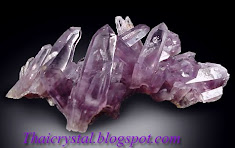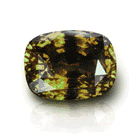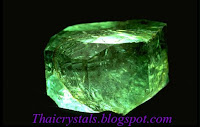Alexandrite or its mineralogical name Chrysoberyl is famous by its ability to change color from a deep grass-green in daylight to a strawberry-red in electric light, or better still, candle light. Less pronounced changes, say from green to a reddish-mauve, are more common.
Fluorescent light usually produces intermediate colors and is not a form of lighting that shows gemstones to their advantage. The color change is caused by the nature of the light used; daylight is more blue and electric light is more yellow. In an alexandrite red and green are so evenly balanced that either predominates in the appropriate light. The most striking color can be seen in stones emanating from pegmatites near the river Takovaya in the Ural mountains, Russia, but these stones are cloudy and the gems that it is possible to cut from the rough crystals only rarely exceed three carats. Much larger and clearer stones come from Ceylon but their color change tends to be less pronounced.
Alexandrite was discovered in the Urals in 1831 and named after the crown prince who became Tsar Alexander II. Appropriately enough, red, white and green, the trichroic colors of alexandrite, were also the Russian national colors at that time.
Alexandrite is usually step cut and looks well in a gold setting. Demand for it has increased greatly and made it one of the most expensive of gemstones.

Custom Search

















































